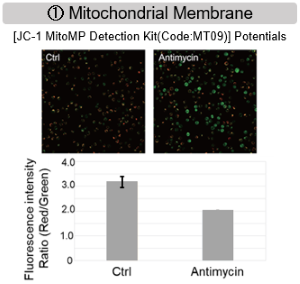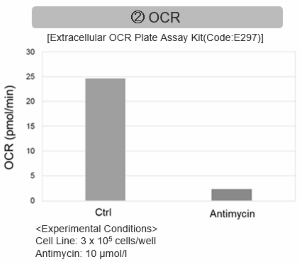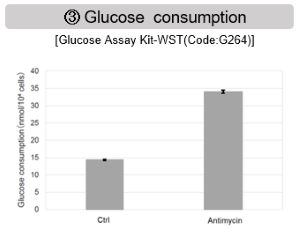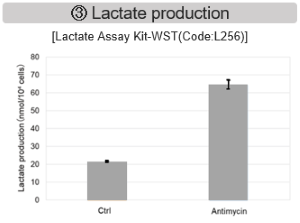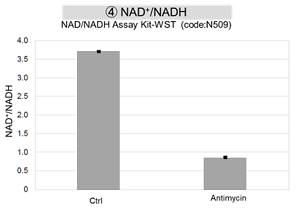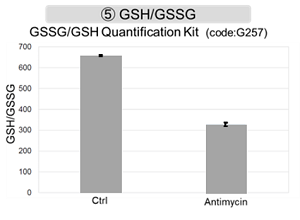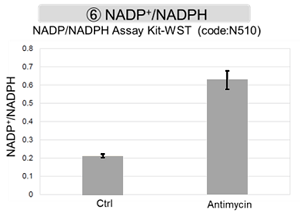|
In recent years, the discovery of several novel mitochondrial stress responses has attracted much attention. A mitochondrial iron-responsive pathway was discovered that protects cells from iron deficiency. In other breakthroughs, a new anticancer target is identified and the nucleus-to-mitochondria ROS-sensing pathway is implicated in resistance to platinum-based treatments for ovarian cancer. Research also uncovers the role of the protein in promoting mitochondrial fission, essential for effective mitophagy.
Dojindo has a number of unique probes that can be used to evaluate different mitochondrial stress responses: Mitochondrial Fe2+ detection MitoFerro-Green, Mitochondrial ROS Detection MitoBright ROS - Mitochondrial Superoxide Detection, and so on.
|
-
A mitochondrial iron-responsive pathway regulated by DELE1
Click here for the original article: Yusuke Sekine, et. al., Molecular Cell, 2023.
Point of Interest
- In a steady state, DELE1 is swiftly degraded by the matrix-resident LONP1 post-import.
- When iron is deficient, DELE1 import is halted, leading to its stabilization on mitochondria.
- The stabilized full-length form of DELE1 activates HRI on the surface of mitochondria.
- The DELE1-HRI-ISR pathway serves to protect erythroid cells from cell death induced by iron deficiency.
-
Systematic identification of anticancer drug targets reveals a nucleus-to-mitochondria ROS-sensing pathway
Click here for the original article: Junbing Zhang, et. al., Cell, 2023.
Point of Interest
- The integration of chemical proteomics and CRISPRi screens identifies ROS-target proteins.
- Nuclear H2O2 oxidizes C408 within the autoinhibitory domain of CHK1, thereby leading to its activation.
- CHK1 regulates mitochondrial translation by suppressing the mtDNA-binding protein, SSBP1.
- SSBP1 promotes resistance to platinum-based agents and nuclear H2O2 in cases of ovarian cancer.
-
The mitochondrial intermembrane space protein mitofissin drives mitochondrial fission required for mitophagy
Click here for the original article: Tomoyuki Fukuda , et. al., Molecular Cell, 2023.
Point of Interest
- Mitofissin is a mitochondrial fission factor located within the inner mitochondrial space.
- The yeast Mitofissin, known as Atg44, promotes mitochondrial fission, which is essential for mitophagy.
- Atg44 directly induces membrane fragility, facilitating membrane fission.
- The mechanisms and roles of membrane fission performed by Atg44 differ from those of Dnm1.
|
| Related Techniques |
|
|
|
|
|
|
|
|
|
|
|
|
- Mitochondrial staining (Long-Term Visualization)
- MitoBright LT Green, Red, Deep Red
|
|
|
| Related Applications |
Lysosomal Function and Mitochondrial ROS
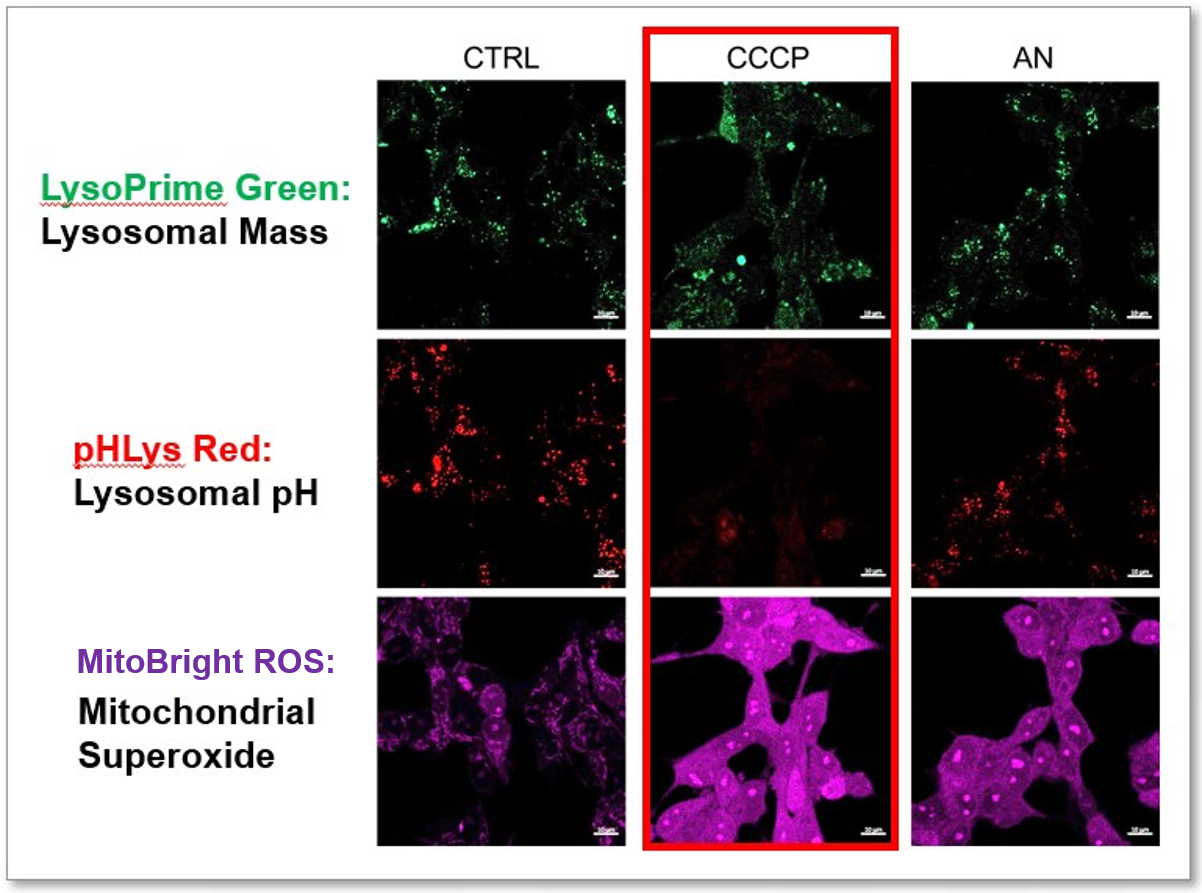
-
CCCP and Antimycin are recognized inducers of mitochondrial ROS, linked to the loss of mitochondrial membrane potential. Recent studies have shown that CCCP induces not only mitochondrial ROS but also lysosomal dysfunction. To observe mitochondrial ROS, HeLa cells were labeled with MitoBright ROS Deep Red for Mitochondrial Superoxide Detection, and the lysosomal mass and pH were independently detected with LysoPrime Green and pHLys Red. Co-staining with MitoBright ROS and Lysosomal dyes revealed that CCCP, unlike Antimycin, triggers concurrent lysosomal neutralization and mitochondrial ROS induction.
Reference: Benjamin S Padman, et. al., Autophagy (2013)
Products in Use
- LysoPrime Green
- pHLys Red
- Lysosomal Acidic pH Detection Kit
- MitoBright ROS - Mitochondrial Superoxide Detection
|
Lysosomal Function and Mitochondrial ROS
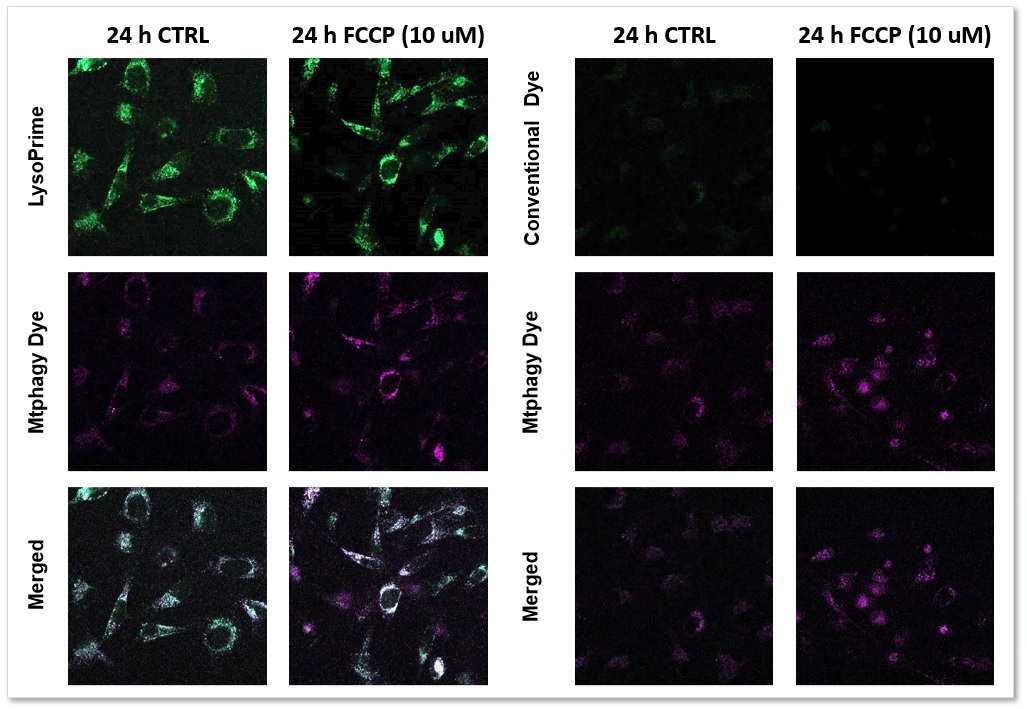
-
We performed fluorescence imaging by stimulating mitophagy induction in SHSY-5Y cells stained with Mitophagy Detection(Code: MD01) and LysoPrime Green or existing products. The fluorescence signal of LysoPrime Green did not decrease and the lysosomal localization over time was confirmed. This means that the co-localization rate of the fluorescent spots of the Mtphagy Dye is higher than that of the existing product, and thus more accurate mitophagy analysis can be performed.
LysoPrime Green: Ex= 488 nm, Em= 500-570 nm
Mtphagy Dye: Ex= 561 nm, Em= 560-650 nm
Products in Use
- LysoPrime Green
- Mitophagy Detection Kit and Mtphagy Dye
|
Inhibition of Mitochondrial Electron Transport Chain
-
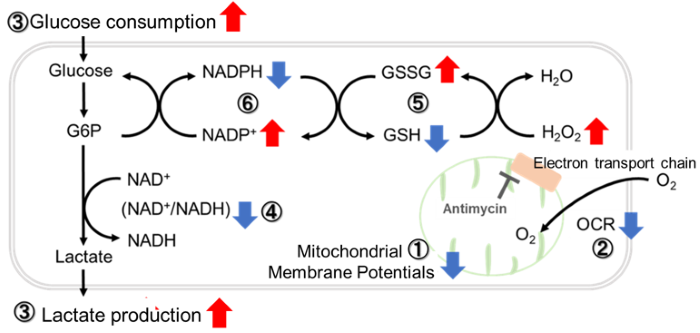
-
Antimycin stimulation of Jurkat cells was used to evaluate the changes in cellular state upon inhibition of the mitochondrial electron transport chain using a variety of indicators.
The results showed that inhibition of the electron transport chain resulted in (1) a decrease in mitochondrial membrane potential and (2) a decrease in OCR. In addition, (3) the NAD+/NADH ratio of the entire glycolytic pathway decreased due to increased metabolism of pyruvate to lactate to maintain the glycolytic pathway, (4) GSH depletion due to increased reactive oxygen species (ROS), and (6) increase in the NADP+/NADPH ratio due to decreased NADH required for glutathione biosynthesis were observed.
|







